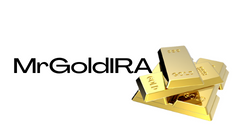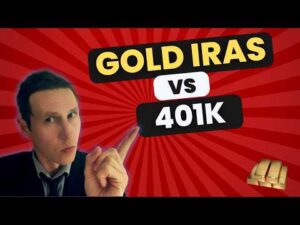
Amidst a partial government shutdown in Washington, the drive for comprehensive U.S. crypto market structure laws is gaining impressive traction.
Brian Armstrong, the CEO of Coinbase, is optimistic, noting that the sector is almost there, with senators from both sides collaborating extensively to finalize the much-anticipated regulatory framework for digital assets.
After engaging with Senate Democrats and Republicans throughout the week, Armstrong believes that the remaining hurdles in the CLARITY Act, particularly regarding decentralized finance (DeFi) and stablecoin rewards, are close to resolution.
"We're on the brink of ironing out the final 10%, and we're making significant progress," Armstrong shared on social media. "We're optimistic about passing a bill by year-end and hopeful for Committee approval by Thanksgiving."
This upbeat outlook from the Coinbase leader coincides with heightened interactions between legislators and crypto industry figures, signaling a robust bipartisan effort to bring clarity to digital asset regulations, a milestone not seen since Congress first tackled the issue years ago.
July Breakthrough: Bipartisan Support
The focal point of these dialogues, the Digital Asset Market Clarity Act (CLARITY Act), secured a strong bipartisan mandate of 294–137 in the House of Representatives in July.
Presently under review by the Senate Banking Committee, overseen by Sen. Tim Scott (R-SC), there are expectations for it to progress to the Senate floor by the year's end.
In a recent CNBC interview, Armstrong described the meetings with senators from both sides as "highly productive," highlighting the collaborative spirit as a promising indicator for the U.S. crypto sector.
Key figures like Senate Majority Leader Chuck Schumer (D-NY), Sen. Kirsten Gillibrand (D-NY), and Sen. Cynthia Lummis (R-WY) engaged in discussions with Armstrong and other crypto luminaries such as Kraken co-CEO David Ripley, Uniswap Labs founder Hayden Adams, and Chainlink Labs’ Sergey Nazarov.
The CLARITY Act aims to dispel years of regulatory ambiguity by clearly categorizing digital assets as either securities under the SEC or commodities under the CFTC.
According to the bill's framework, networks with sufficient decentralization fall under CFTC oversight, while tokens with centralized control or operating as investment contracts remain under SEC purview.
The legislation also introduces precise guidelines for decentralized finance, secondary trading markets, and custody services, addressing longstanding frustrations among innovators and investors due to the absence of consistent federal directives.
Navigating DeFi and Stablecoin Regulations
However, the final 10% of negotiations may pose challenges, especially concerning the regulation of decentralized finance platforms.
Armstrong advocates for focusing oversight on decentralized intermediaries, like interfaces or aggregators, rather than directly regulating open-source protocols.
Another contentious issue is stablecoin rewards, where the banking sector pushes for elimination. Industry proponents, including Coinbase, argue that consumers should earn yields on regulated stablecoin holdings, akin to interest from traditional savings accounts.
These discussions underscore the contrasting priorities in Congress: Democrats emphasize preventing illicit financial activities and safeguarding consumers, while Republicans stress fostering innovation and competitiveness.
Despite bipartisan cooperation, the timeline remains uncertain. The ongoing shutdown has delayed committee work and pushed back the formal bill markup. Some lawmakers, like Sen. John Kennedy (R-LA), doubt the committee's readiness to proceed, citing concerns about regulatory authority and industry influence.
Nevertheless, proponents remain confident in the momentum. Sen. Lummis, a stalwart advocate for digital asset laws, predicts that the market structure bill will land on the president's desk "before the year's end — hopefully before Thanksgiving," as she shared at the SALT Wyoming Blockchain Symposium.
Frequently Asked Questions
Who has the gold in a IRA gold?
The IRS considers gold owned by an individual to be “a type of money” and is subject taxation.
You must have gold at least $10,000 and it must be stored for at the least five years in order to take advantage of this tax-free status.
Gold can be used to protect against inflation and price volatility. However, it is not a good idea to own gold if you don't intend to use it.
If you plan to eventually sell the gold, you'll need a report on its value. This could impact the amount of capital gains taxes your owe if you cash in your investments.
It is a good idea to consult an accountant or financial planner to learn more about your options.
What is the best precious-metal to invest?
This depends on what risk you are willing take and what kind of return you desire. Although gold has been considered a safe investment, it is not always the most lucrative. If you are looking for quick profits, gold might not be the right investment. If you have the patience to wait, then you might consider investing in silver.
If you're not looking to make quick money, gold is probably your best choice. If you are looking for a long-term investment that will provide steady returns, silver may be a better choice.
How much of your IRA should include precious metals?
When investing in precious metals, the most important thing to know is that they aren't just for wealthy people. They don't require you to be wealthy to invest in them. In fact, there are many ways to make money from gold and silver investments without spending much money.
You might consider purchasing physical coins, such as bullion bars and rounds. Also, you could buy shares in companies producing precious metals. Or, you might want to take advantage of an IRA rollover program offered by your retirement plan provider.
Regardless of your choice, you'll still benefit from owning precious metals. Even though they aren't stocks, they still offer the possibility of long-term growth.
And, unlike traditional investments, their prices tend to rise over time. If you decide to make a sale of your investment in the future, you will likely realize more profit than with traditional investments.
Is buying gold a good way to save money for retirement?
Buying gold as an investment may not seem very appealing at first glance, but when you consider how much people spend on average on gold per year worldwide, it becomes worth considering.
The best form of investing is physical bullion, which is the most widely used. You can also invest in gold in other ways. The best thing to do is research all options thoroughly and then make an informed decision based on what you want from your investments.
For example, purchasing shares of companies that extract gold or mining equipment might be a better option if you aren't looking for a safe place to store your wealth. If you require cash flow, gold stocks can work well.
You can also invest your money in exchange-traded fund (ETFs), which give you exposure to the gold price by holding securities related to gold. These ETFs typically include stocks from gold miners, precious metallics refiners, commodity trading companies, and other commodities.
How much gold can you keep in your portfolio
The amount of money you need to make depends on how much capital you are looking for. For a small start, $5k to $10k is a good range. Then as you grow, you could move into an office space and rent out desks, etc. This will allow you to pay rent monthly, and not worry about it all at once. You just pay per month.
It's also important to determine what type business you'll run. My website design company charges clients $1000-2000 per month depending on the order. Consider how much you expect to make from each client, if you decide to do this kinda thing.
You won't get a monthly paycheck if you work freelance. This is because freelancers are paid. Therefore, you might only get paid one time every six months.
You must first decide what kind and amount of income you are looking to generate before you can calculate how much gold will be needed.
I suggest starting with $1k-2k gold and building from there.
What is the Performance of Gold as an Investment?
Supply and demand determine the gold price. Interest rates also have an impact on the price of gold.
Due to the limited supply of gold, prices for gold are highly volatile. There is also a risk in owning gold, as you must store it somewhere.
Can I keep a Gold ETF in a Roth IRA
While a 401k may not offer this option for you, it is worth considering other options, such an Individual Retirement Plan (IRA).
Traditional IRAs allow contributions from both the employer and employee. Another way to invest in publicly traded companies is through an Employee Stock Ownership Plan.
An ESOP can provide tax advantages, as employees are allowed to share in company stock and the profits generated by the business. The money in the ESOP can then be subject to lower tax rates than if the money were in the individual's hands.
A Individual Retirement Annuity is also possible. You can make regular payments to your IRA throughout your life, and you will also receive income when you retire. Contributions to IRAs can be made without tax.
Statistics
- Contribution limits$6,000 (49 and under) $7,000 (50 and up)$6,000 (49 and under) $7,000 (50 and up)$58,000 or 25% of your annual compensation (whichever is smaller) (lendedu.com)
- Instead, the economy improved, stocks rebounded, and gold plunged, losing 28 percent of its value in 2013. (aarp.org)
- This is a 15% margin that has shown no stable direction of growth but fluctuates seemingly at random. (smartasset.com)
- The price of gold jumped 131 percent from late 2007 to September 2011, when it hit a high of $1,921 an ounce, according to the World Gold Council. (aarp.org)
- If you take distributions before hitting 59.5, you'll owe a 10% penalty on the amount withdrawn. (lendedu.com)
External Links
investopedia.com
bbb.org
law.cornell.edu
- 7 U.S. Code SS 7 – Designation of boards of trade as contract markets
- 26 U.S. Code SS 408 – Individual retirement account
wsj.com
- Saddam Hussein's Invasion Helped Uncage a Bear In 1990 – WSJ
- Are you interested in keeping gold in your IRA at-home? It's not exactly legal – WSJ
How To
The History of Gold as an Asset
Gold was a currency from ancient times until the early 20th century. It was widely accepted around the world and enjoyed its purity, divisibility and uniformity. In addition, because of its value, it was traded internationally. There was no international standard for measuring gold at that time, so different weights and measures were used around the world. For example in England, a pound sterling equals 24 carats. In France, a livre tournois equals 25. Carats of golden. Germany had one mark which equals 28. Carats.
In the 1860s, the United States began issuing American coins made up of 90% copper, 10% zinc, and 0.942 fine gold. This caused a drop in foreign currency demand which resulted in an increase of their prices. The price of gold dropped because the United States began to mint large quantities of gold coins. Due to the excessive amount of money flowing into the United States, they had to find a way for them to repay some of their debt. They decided to sell some excess gold to Europe in order to do this.
Since most European countries were not confident in the U.S. dollar they began accepting gold as payment. However, after World War I, many European countries stopped taking gold and began using paper money instead. Since then, the price of gold has increased significantly. Even though the price fluctuates, gold is still one of best investments.
—————————————————————————————————————————————————————————————-
By: Micah Zimmerman
Title: A New Era for Crypto Legislation: Bipartisan Support Surges as Coinbase's Armstrong Sees Progress
Sourced From: bitcoinmagazine.com/politics/crypto-market-bill-gains-momentum
Published Date: Thu, 23 Oct 2025 20:37:34 +0000

















